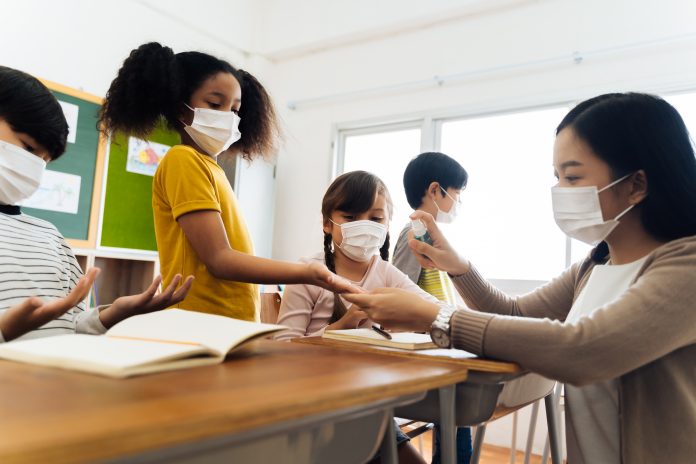Graham Mimms, Hygiene Aviation Expert and co-founder of Safe Surface Sensor, explains why the only way to stop a future health crisis is to ensure we have strict hygiene policies in place
Parents have known for years how quickly a bug, infection or parasite can spread around a school. Most kids have at some point come home with headlice or chickenpox – and no one can escape the annual spread of colds. The management of hygiene has always been an issue within education, faced by schools, colleges and universities alike. However, COVID-19 has thrust the debate around how we control the spread of viruses firmly into the forefront of public consciousness, and schools are a clear example of where more can and should be done.
Perhaps understandably though, schools and universities have not always been at the top of the government’s list of priorities when it comes to hygiene standards. It quickly emerged that it is the elderly and most vulnerable that are at the greatest risk from coronavirus, and the prevalent assumption is that children and young people go relatively unscathed if they do catch the disease. Evidence suggests that primary school kids only spread coronavirus in a limited way. But older schoolchildren and young adults experienced a fast rise in infections when schools remained open in November. In March, Sage, the government’s scientific advisory group, estimated that re-opening schools could increase the R rate – or reproduction rate – by as much as 30%.
The cost of schools closing – or kids in individual bubbles having to stay off school when there is a positive test for COVID-19 – is damaging in other ways. Children miss out on their education and on socializing with friends which is detrimental to their mental health. So it is vital that we do everything we can to keep schools running.
Cleaning processes
Public Health England has so far only issued very broad hygiene advice to schools and universities. It has not set specific cleaning protocols to help to maintain safety standards. Yes, youngsters have been asked to wear masks, take lateral flow tests and wash their hands regularly, and schools have done all they can to protect students and staff, but how many educational institutions have been able to develop a clear, viable, and documentable account of their cleaning processes?
The answer: very few.
As it stands, The Department of Education recommends the implementation of “enhanced cleaning” processes, over and above previous arrangements, especially on surfaces that are frequently touched by pupils and staff. The advice leaves a lot of room for interpretation, so it is no surprise that schools and universities across the country are adopting vastly different cleaning processes, at very different standards.
Organisations have not been formally asked to verify their safety procedures and have no benchmark by which to judge the quality of their hygiene protocols. It is estimated that even basic covid cleaning procedures cost an extra £720,000 per secondary school, so it’s no surprise that many are struggling with the additional the financial burden of ‘enhanced cleaning’ during the pandemic. Clear guidance would help schools and universities to fix their costs and have a cleaning system to work to.
Parents need to feel safe in the knowledge that their children are in COVID-compliant environments. Teachers also deserve assurance that educational authorities are fully committed to implementing rigorous hygiene practices within their workplace. Hygiene has never been so important, and the system is desperately in need of uniform regulations and clearer health and safety standards from the government.
One way to improve things is to introduce low-cost hygiene technology like Safe Surface Sensor, which uses sensors to detect whether an area has been adequately disinfected or fogged during a nightly sanitation routine. Using “bio-sensing technology”, sensors are placed on a surfaces in public areas where the transmission of COVID-19 may occur before being sanitised. The area is then sprayed using a fogging system, which disperses a fine mist which is then left to evaporate, killing viruses in the air and on surfaces. The sensors detect whether the area has been adequately disinfected and results are uploaded to a central database. The impact that this could have on consumer confidence is self-evident, and we would urge the government to seriously consider the adoption of such technology within schools.
In many ways, it is a wonder that it took a global pandemic for many of us to learn even the very basics of personal hygiene, but already much of this learning is being ignored. Our public health response has shifted from thorough hand cleaning and disinfection at the beginning of the pandemic, to ‘test, test, test’, which begs the question: how can we be sure that every surface we touch is not infected with coronavirus or another disease?
Vaccines will only get us so far, and as our nation enters a new phase in the fight against COVID-19, teachers and students need confirmation that they are in verifiably hygienic environments that are free from viruses and bacteria.











